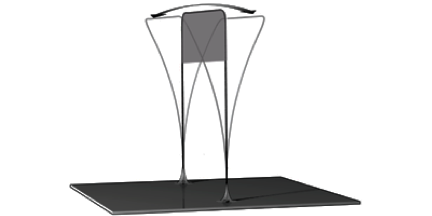Dragging Data out of Superfluids
Gaining a full understanding of turbulence has been called one of the grand challenges of physics. In classical fluids, turbulence has widespread technological implications, but its complexity means that our predictive ability is limited. Quantum turbulence, on the other hand, is more constrained—at very low temperatures, normal fluid turbulence is replaced by entangled quantized vortex lines that are somewhat easier to model. At the same time, there are enough similarities that puzzling out the quantum case can help with improving our picture of classical turbulence. To this end, Ian Bradley and colleagues at Lancaster University, UK, report in Physical Review B their measurement of the fundamental phenomenon of turbulent drag in superfluid helium.
To establish a region of well-characterized homogeneous quantum turbulence, the authors placed a metal grid in the superfluid, which oscillates back and forth like a miniature fly-swatter. With this device, Bradley et al. could measure the dissipative and inertial drag coefficients as the fluid flows through the holes in the moving grid. They used a set of pickup coils near the grid to track the grid position, and the oscillations were driven by a current passing through the grid frame interacting with an external magnetic field. With the moving grid immersed in either superfluid helium- or superfluid helium- , the authors obtained drag coefficients under different conditions of grid velocity.
Drag at high velocity seems to be the same in superfluid and normal helium- and is independent of frequency, whereas drag in helium- increases dramatically with frequency, suggesting the onset of microscopic pair breaking of the fermionic helium atoms that make up the superfluid pairs. The results provide the first direct comparisons of the turbulent drag from grids in two different superfluids at very low temperatures and with classical turbulent drag measured in normal helium- . – David Voss





